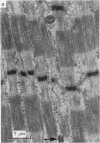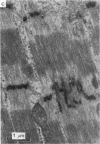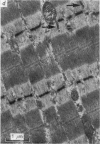Abstract
1. Some electrophysiological and morphological properties of 'fast' (singly innervated) and 'slow' (multiply innervated) muscle fibres were studied in normal and denervated posterior and anterior latissimus dorsi muscles of the young chickens. 2. Normal singly and multiply innervated muscle fibres are capable of generating action potentials which in all qualitative respects are similar. 3. The action potentials of multiply innervated muscle fibres are of lower amplitude and slower maximum rate of rise than action potentials in singly innervated muscle fibres. 4. Denervation causes the resting membrane potential and the maximum rate of rise of the action potential to fall. The changes are greater in singly innervated than in multiply innervated fibres, but in neither case are as great as in mammalian skeletal muscle fibres after surgical denervation. 5. In neither singly nor multiply innervated muscle fibres do the action potentials generate any 'resistance' to tetrodotoxin as a result of denervation. 6. The diameter of multiply innervated fibres is increased after denervation, but it is reduced in singly innervated fibres. The number of myofilaments increases in multiply innervated fibres, but decreases in single innervated fibres. In both types of muscle fibre the volume fraction of myofibrils is decreased. 7. In the singly innervated muscle fibres there is an increase in the volume fraction of mitochondria. 8. In the singly innervated muscle fibres, there is some rearrangement of the membrane systems in that some of the transversely orientated triads are replaced by longitudinally orientated dyads.
Full text
PDF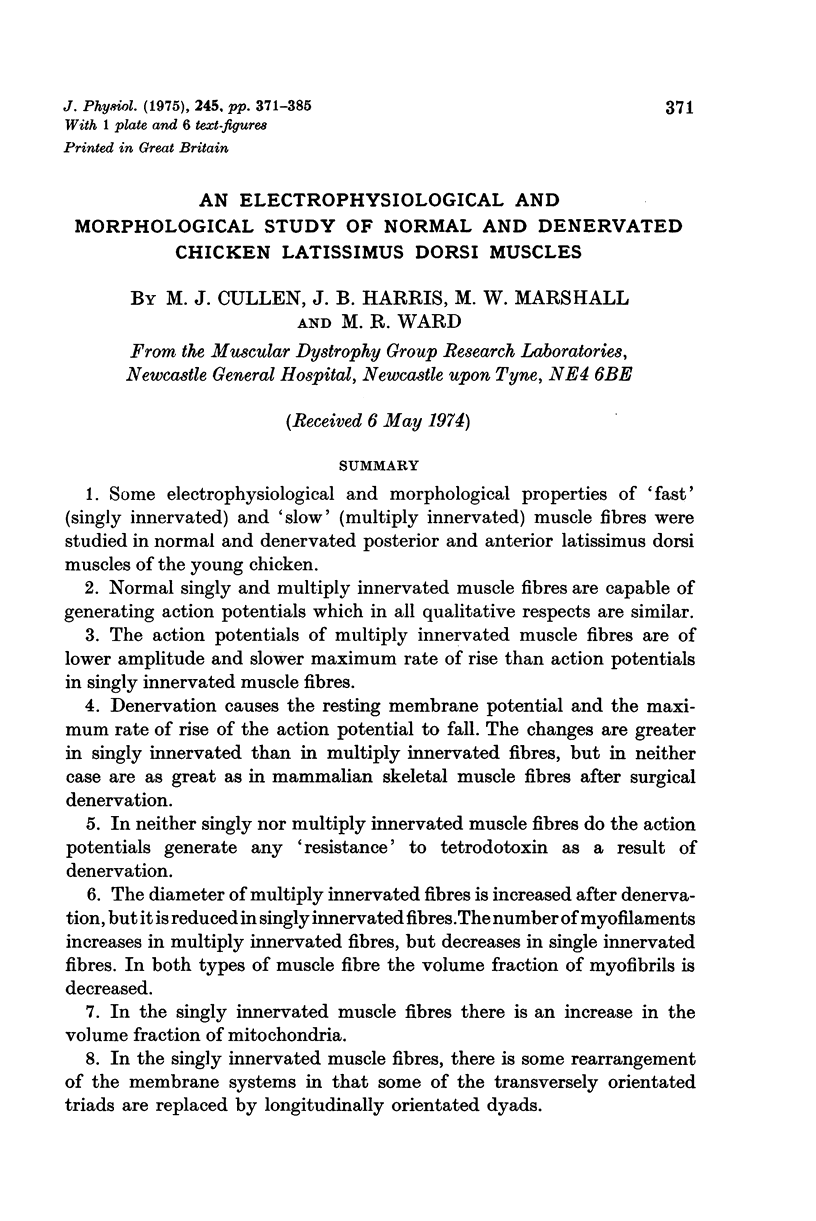
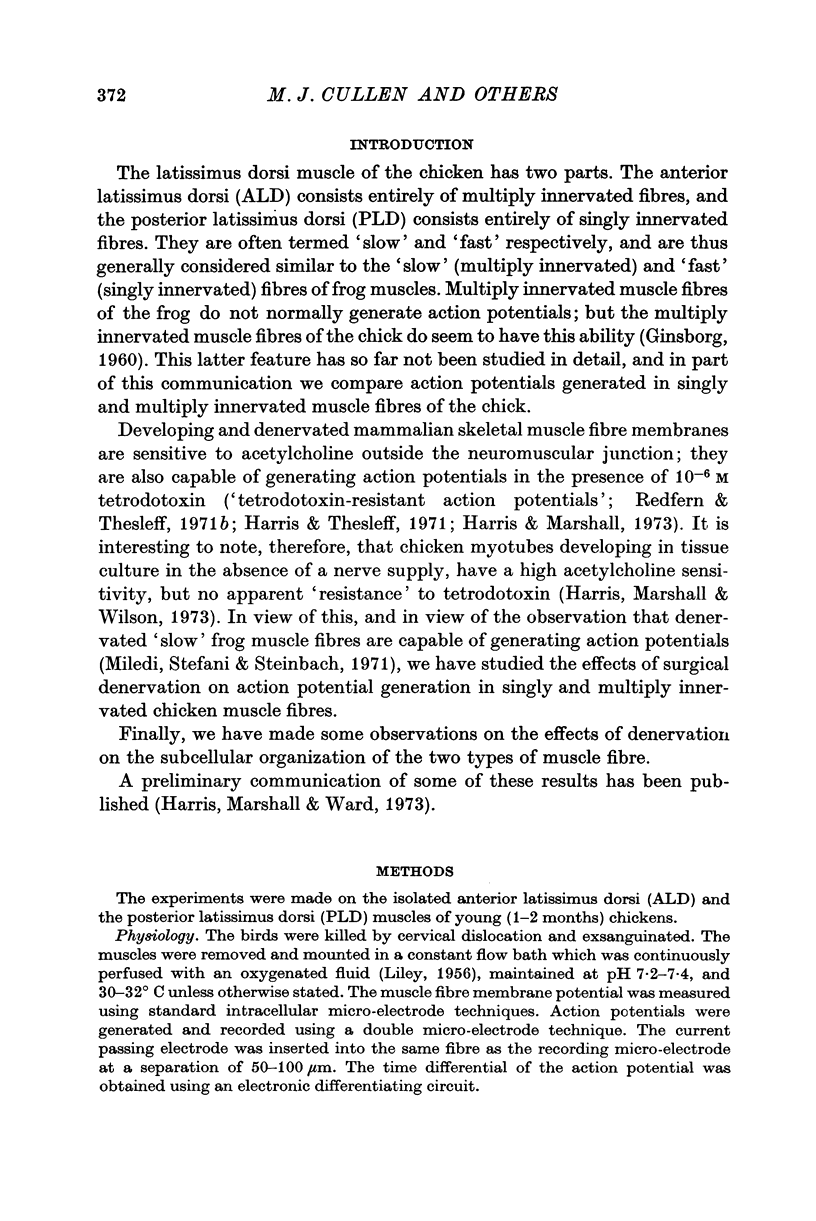
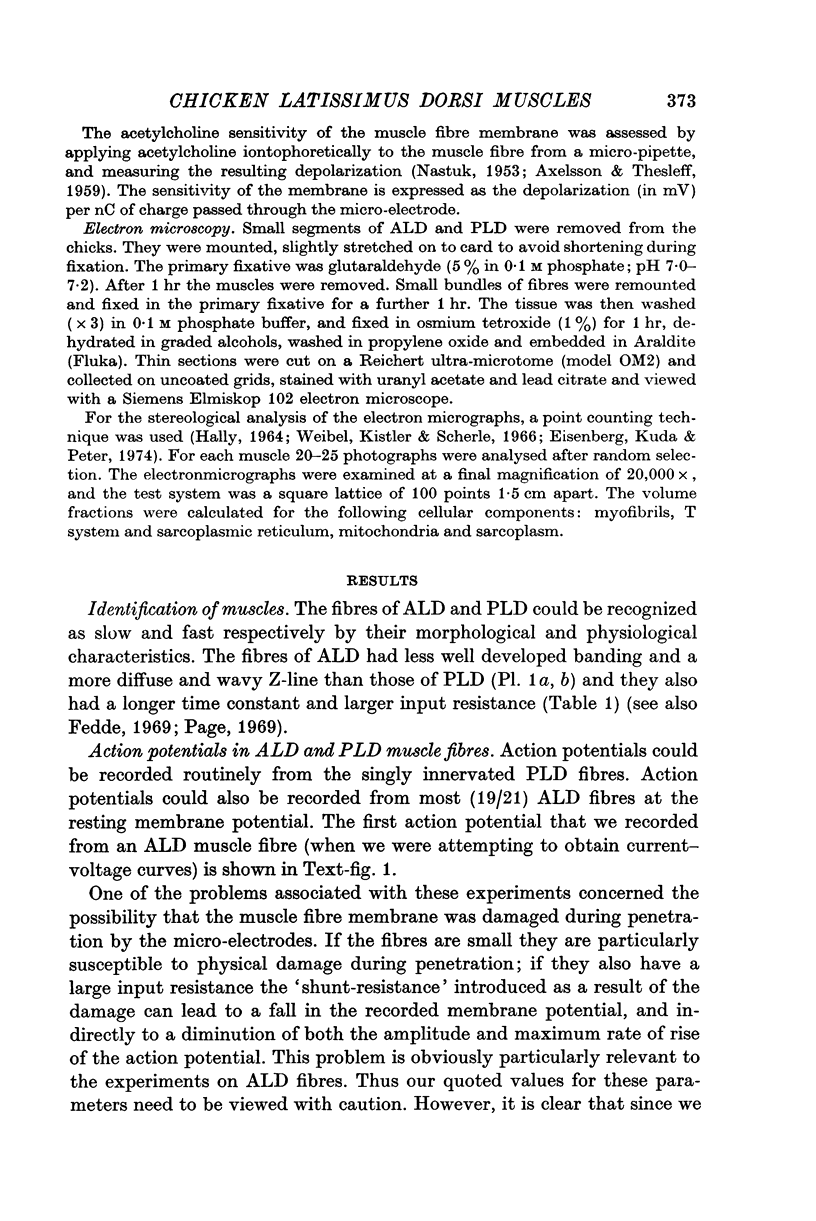
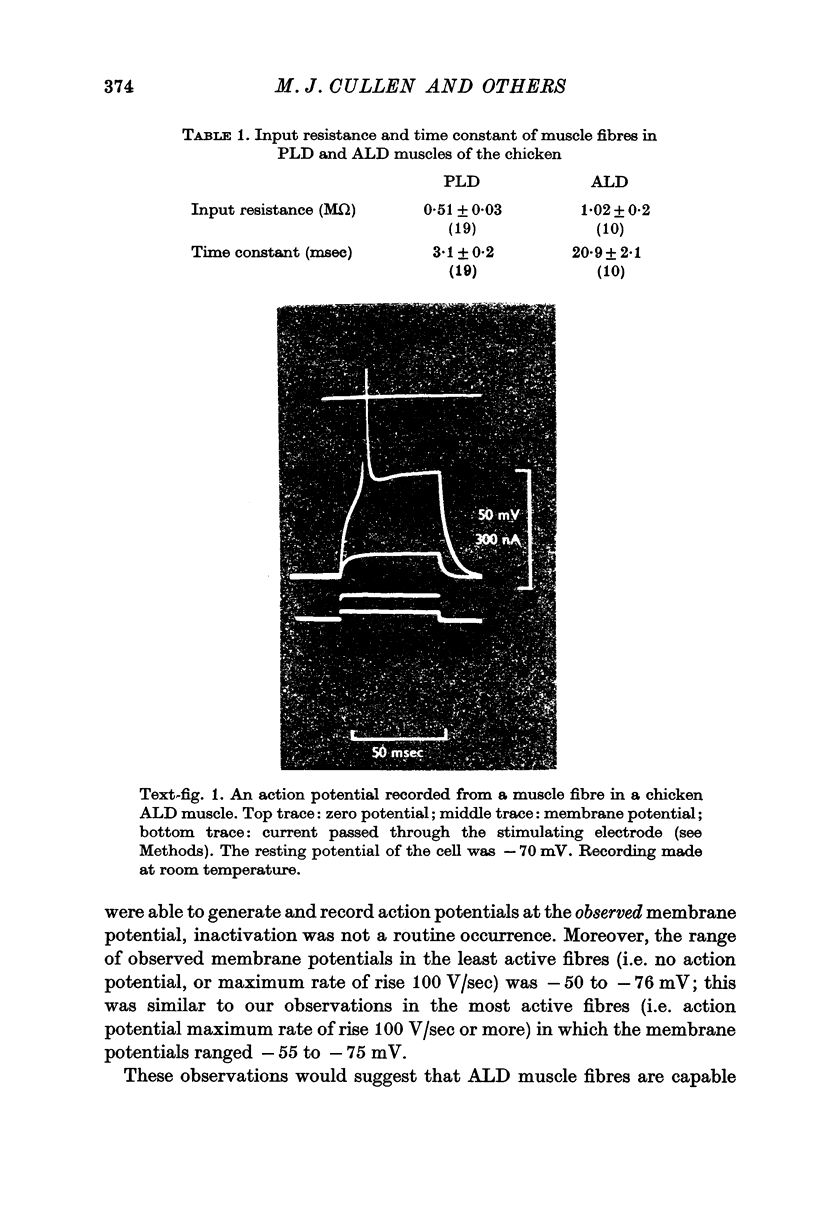
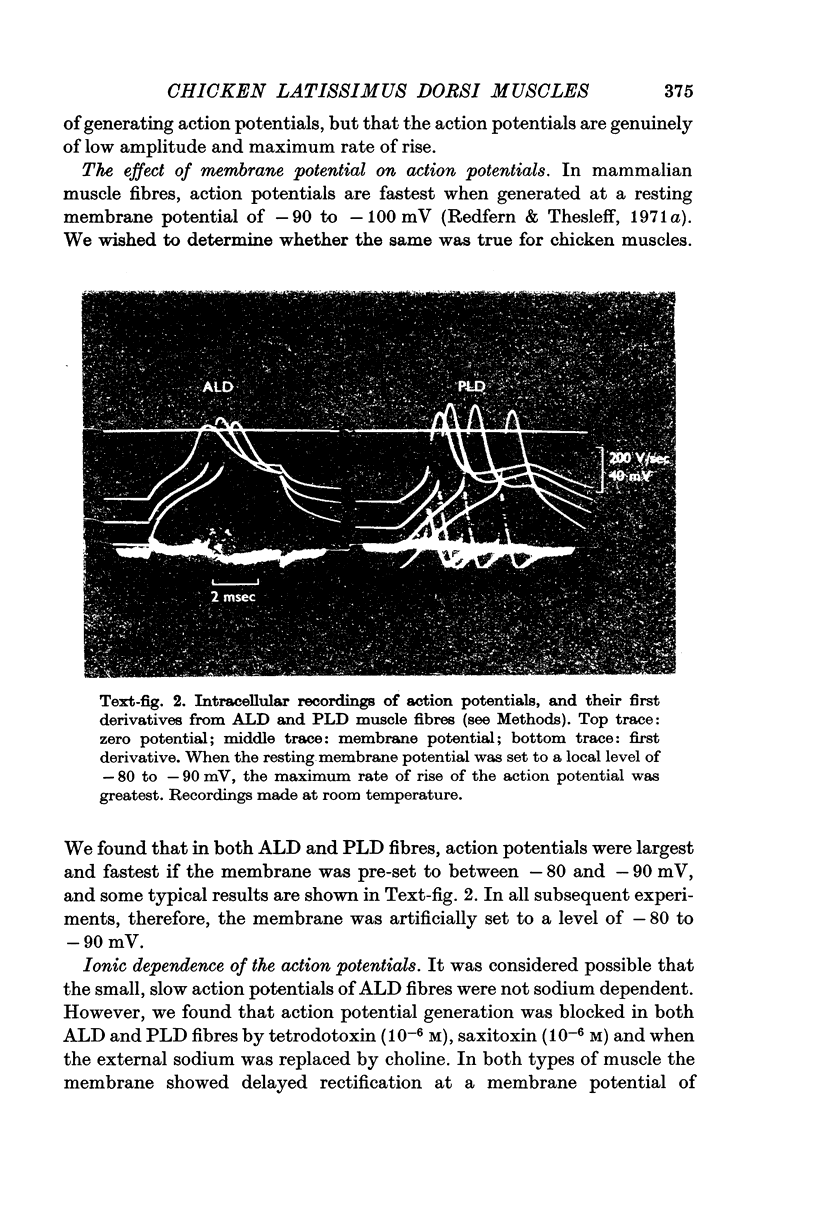



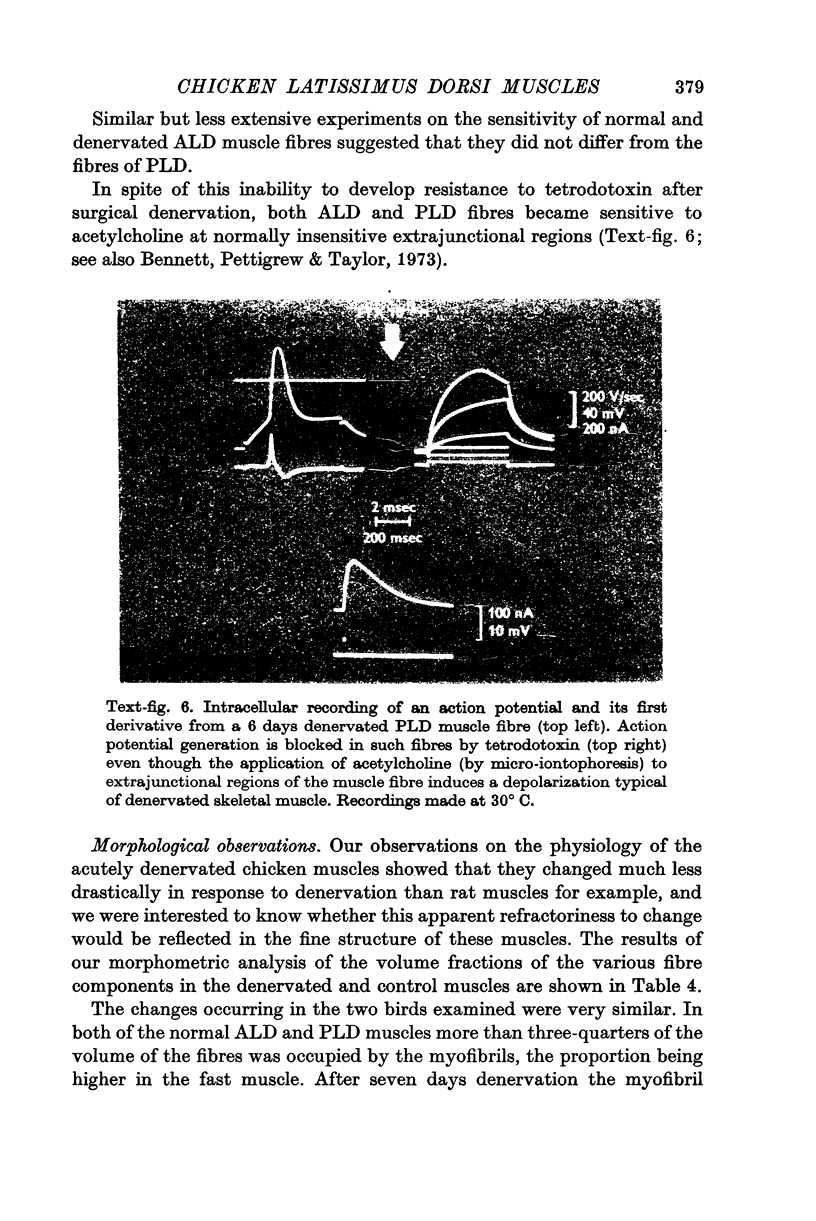
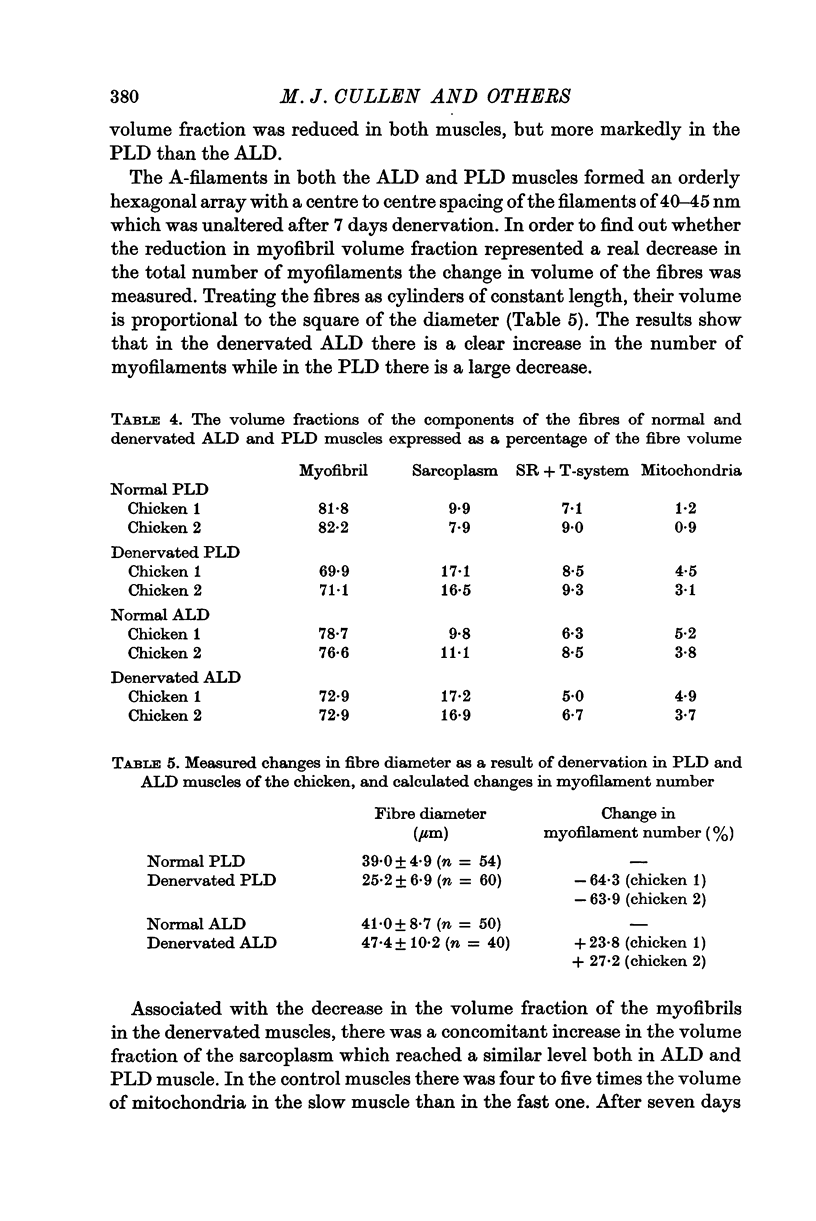
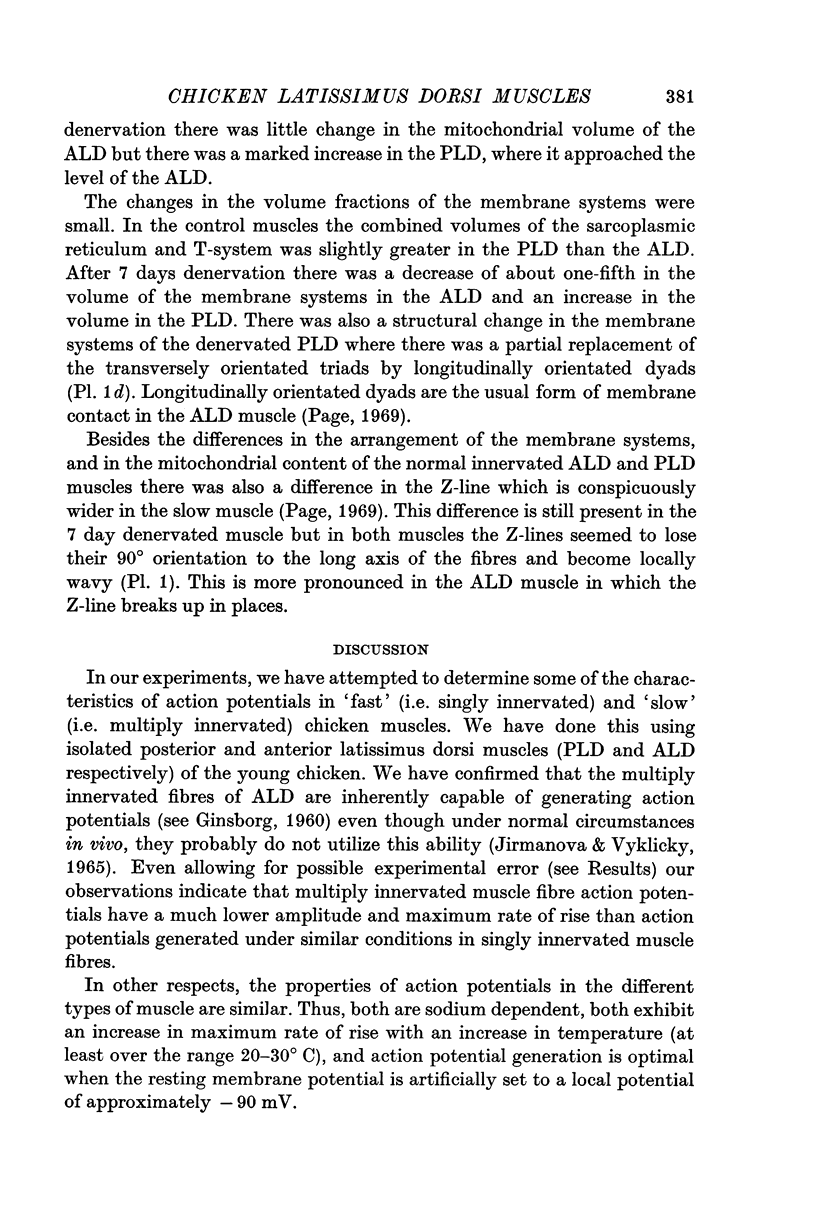
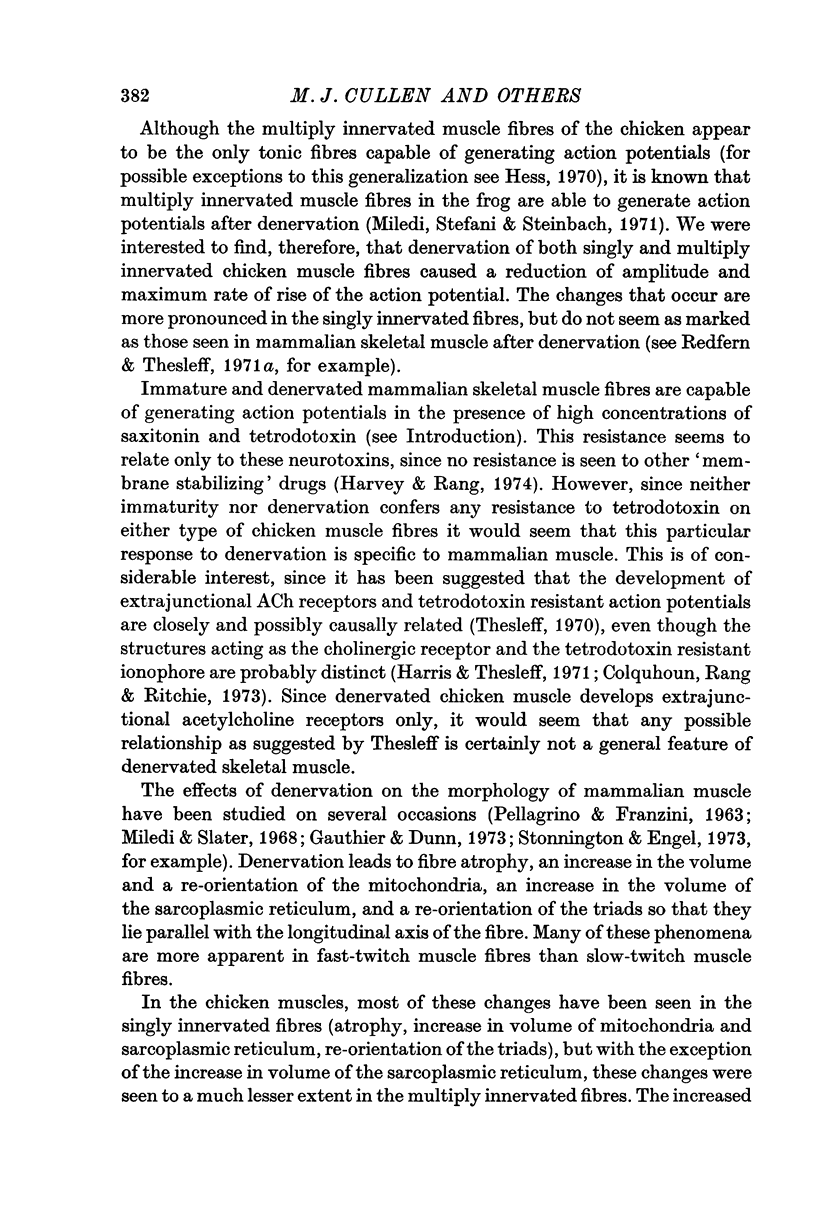
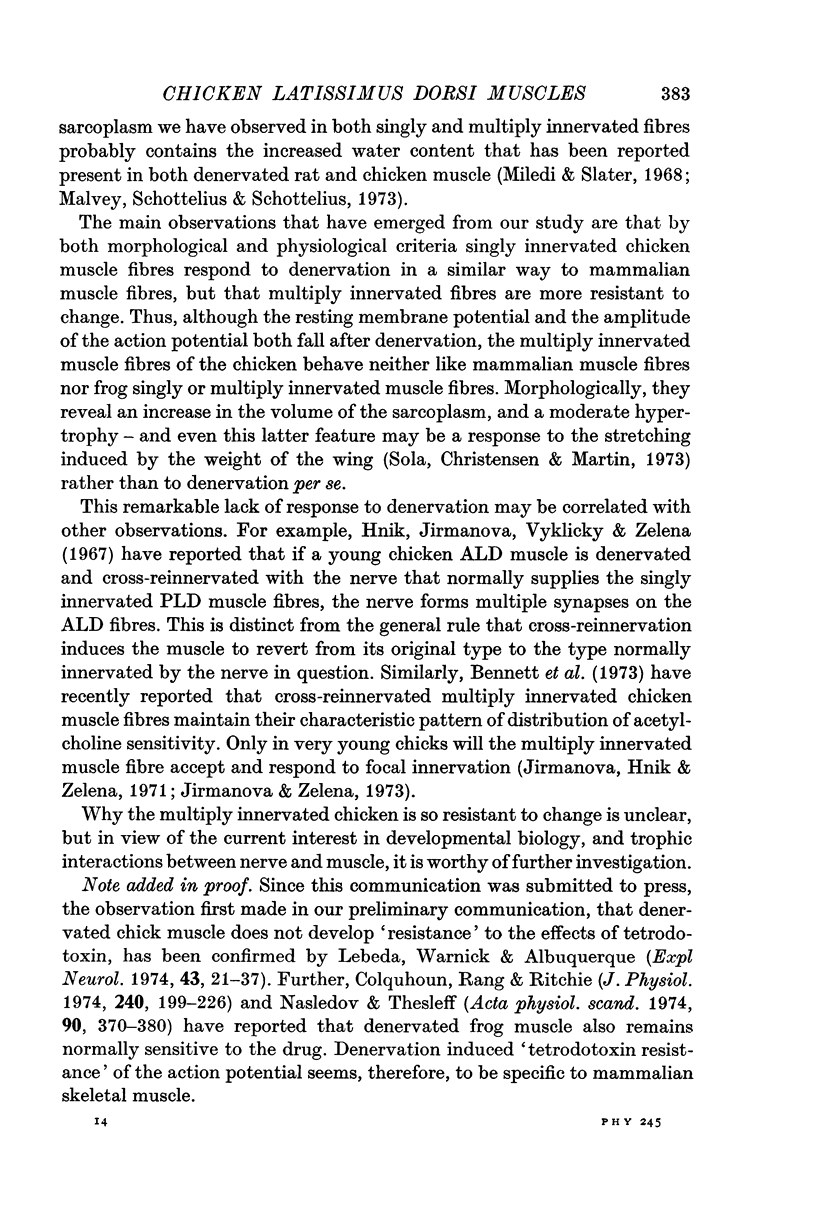
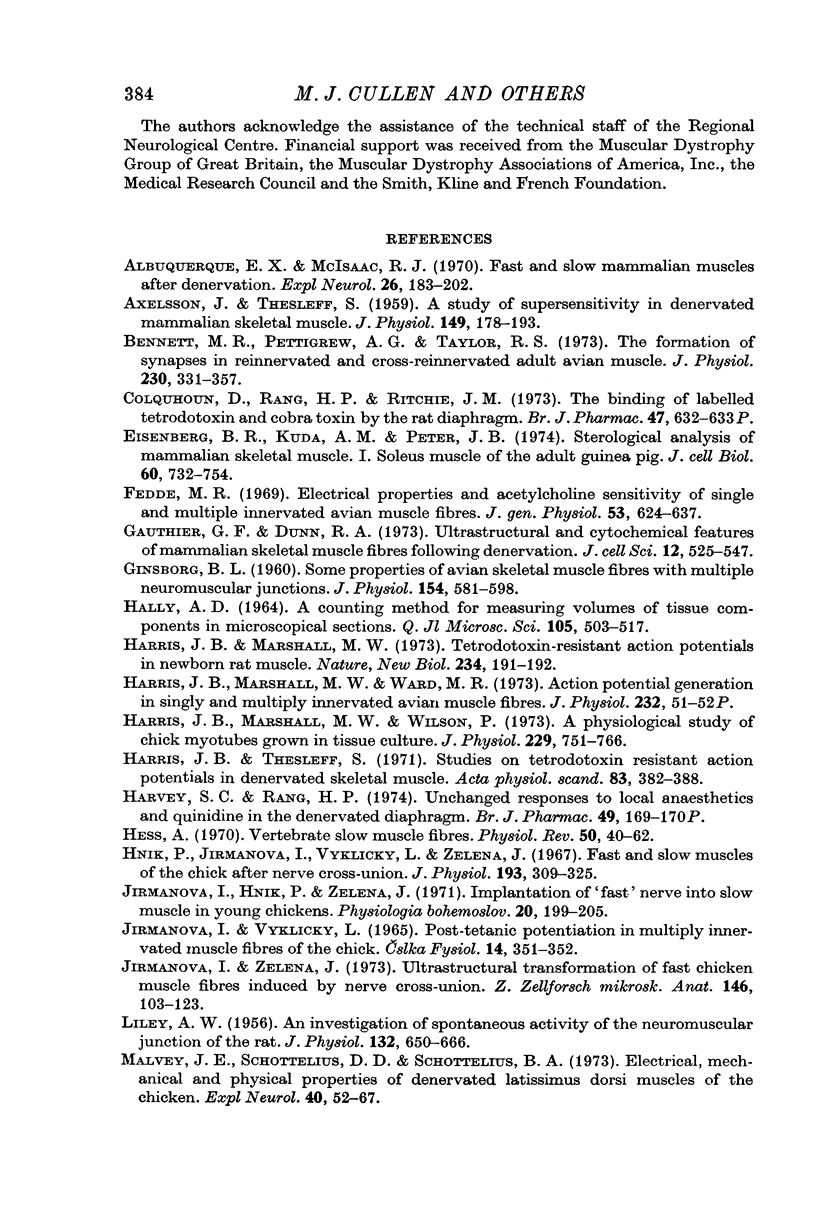
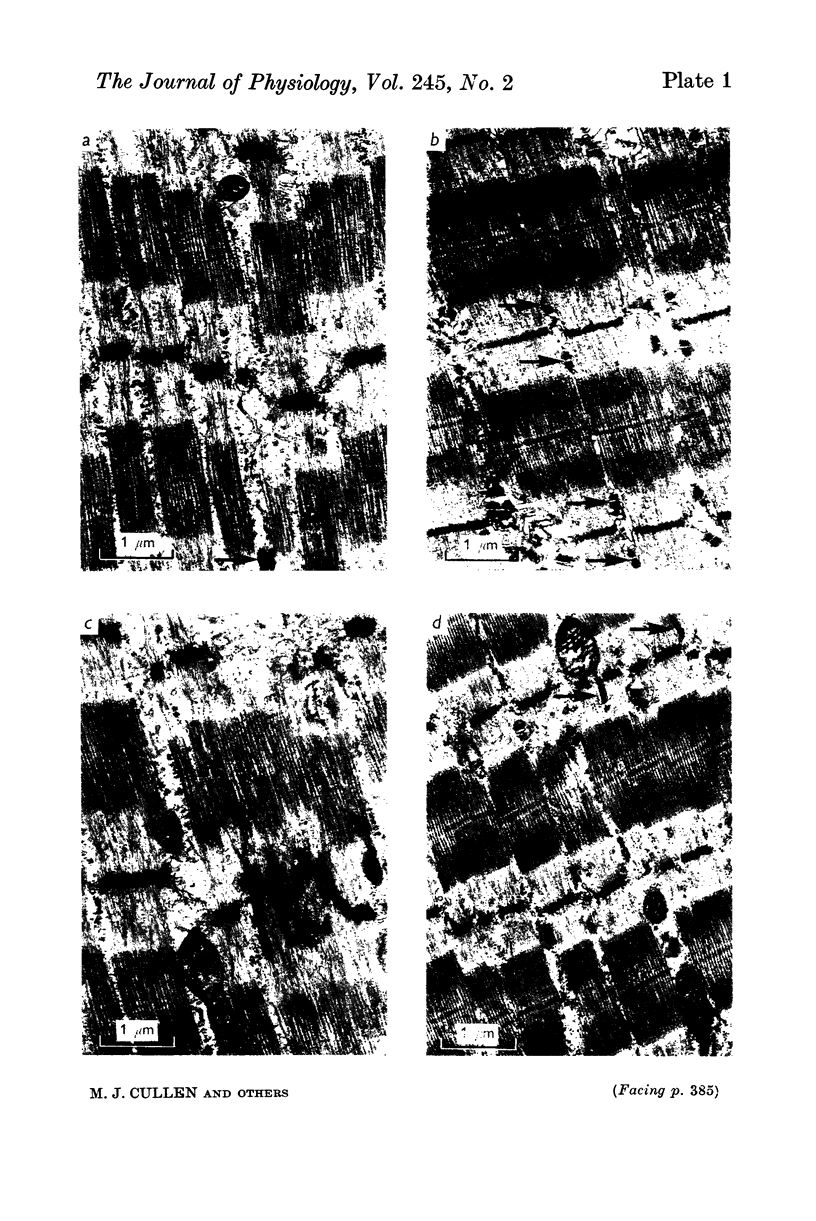
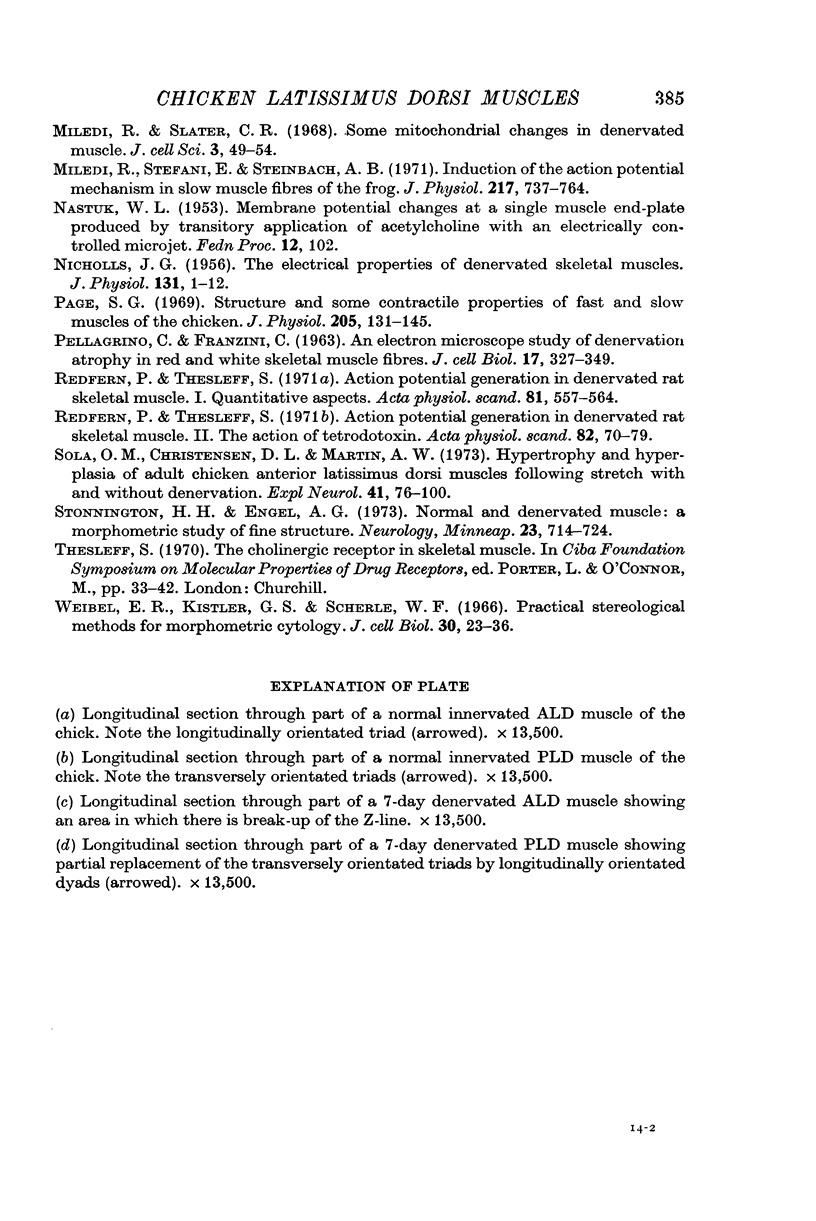
Images in this article
Selected References
These references are in PubMed. This may not be the complete list of references from this article.
- AXELSSON J., THESLEFF S. A study of supersensitivity in denervated mammalian skeletal muscle. J Physiol. 1959 Jun 23;147(1):178–193. doi: 10.1113/jphysiol.1959.sp006233. [DOI] [PMC free article] [PubMed] [Google Scholar]
- Albuquerque E. X., McIsaac R. J. Fast and slow mammalian muscles after denervation. Exp Neurol. 1970 Jan;26(1):183–202. doi: 10.1016/0014-4886(70)90099-3. [DOI] [PubMed] [Google Scholar]
- Bennett M. R., Pettigrew A. G., Taylor R. S. The formation of synapses in reinnervated and cross-reinnervated adult avian muscle. J Physiol. 1973 Apr;230(2):331–357. doi: 10.1113/jphysiol.1973.sp010191. [DOI] [PMC free article] [PubMed] [Google Scholar]
- Eisenberg B. R., Kuda A. M., Peter J. B. Stereological analysis of mammalian skeletal muscle. I. Soleus muscle of the adult guinea pig. J Cell Biol. 1974 Mar;60(3):732–754. doi: 10.1083/jcb.60.3.732. [DOI] [PMC free article] [PubMed] [Google Scholar]
- Fedde M. R. Electrical properties and acetylcholine sensitivity of singly and multiply innervated avian muscle fibers. J Gen Physiol. 1969 May;53(5):624–637. doi: 10.1085/jgp.53.5.624. [DOI] [PMC free article] [PubMed] [Google Scholar]
- GINSBORG B. L. Some properties of avian skeletal muscle fibres with multiple neuromuscular junctions. J Physiol. 1960 Dec;154:581–598. doi: 10.1113/jphysiol.1960.sp006597. [DOI] [PMC free article] [PubMed] [Google Scholar]
- Gauthier G. F., Dunn R. A. Ultrastructural and cytochemical features of mammalian skeletal muscle fibres following denervation. J Cell Sci. 1973 Mar;12(2):525–547. doi: 10.1242/jcs.12.2.525. [DOI] [PubMed] [Google Scholar]
- Harris J. B., Marshall M. W. Tetrodotoxin-resistant action potentials in newborn rat muscle. Nat New Biol. 1973 Jun 6;243(127):191–192. doi: 10.1038/newbio243191a0. [DOI] [PubMed] [Google Scholar]
- Harris J. B., Marshall M. W., Wilson P. A physiological study of chick myotubes grown in tissue culture. J Physiol. 1973 Mar;229(3):751–766. doi: 10.1113/jphysiol.1973.sp010165. [DOI] [PMC free article] [PubMed] [Google Scholar]
- Harris J. B., Thesleff S. Studies on tetrodotoxin resistant action potentials in denervated skeletal muscle. Acta Physiol Scand. 1971 Nov;83(3):382–388. doi: 10.1111/j.1748-1716.1971.tb05091.x. [DOI] [PubMed] [Google Scholar]
- Harvey S. C., Rang H. P. Proceedings: Unchanged responses to local anaesthetic and quinidine in the denervated diaphragm. Br J Pharmacol. 1973 Sep;49(1):169P–170P. [PMC free article] [PubMed] [Google Scholar]
- Hess A. Vertebrate slow muscle fibers. Physiol Rev. 1970 Jan;50(1):40–62. doi: 10.1152/physrev.1970.50.1.40. [DOI] [PubMed] [Google Scholar]
- Hník P., Jirmanová I., Vyklický L., Zelená J. Fast and slow muscles of the chick after nerve cross-union. J Physiol. 1967 Nov;193(2):309–325. doi: 10.1113/jphysiol.1967.sp008359. [DOI] [PMC free article] [PubMed] [Google Scholar]
- Jirmanová I., Hník P., Zelená J. Implantation of "fast" nerve into slow muscle in young chickens. Physiol Bohemoslov. 1971;20(3):199–204. [PubMed] [Google Scholar]
- Jirmanová I., Zelená J. Ultrastructural transformation of fast chicken muscle fibres induced by nerve cross-union. Z Zellforsch Mikrosk Anat. 1973 Dec 31;146(1):103–121. doi: 10.1007/BF00306761. [DOI] [PubMed] [Google Scholar]
- LILEY A. W. An investigation of spontaneous activity at the neuromuscular junction of the rat. J Physiol. 1956 Jun 28;132(3):650–666. doi: 10.1113/jphysiol.1956.sp005555. [DOI] [PMC free article] [PubMed] [Google Scholar]
- Lebeda F. J., Warnick J. E., Albuquerque E. X. Electrical and chemosensitive properties of normal and dystrophic chicken muscles. Exp Neurol. 1974 Apr;43(1):21–37. doi: 10.1016/0014-4886(74)90131-9. [DOI] [PubMed] [Google Scholar]
- Malvey J. E., Schottelius D. D., Schottelius B. A. Electrical, mechanical, and physical properties of denervated latissimus dorsi muscles of the chicken. Exp Neurol. 1973 Jul;40(1):52–67. doi: 10.1016/0014-4886(73)90123-4. [DOI] [PubMed] [Google Scholar]
- Miledi R., Slater C. R. Some mitochondrial changes in denervated muscle. J Cell Sci. 1968 Mar;3(1):49–54. doi: 10.1242/jcs.3.1.49. [DOI] [PubMed] [Google Scholar]
- Miledi R., Stefani E., Steinbach A. B. Induction of the action potential mechanism in slow muscle fibres of the frog. J Physiol. 1971 Sep;217(3):737–754. doi: 10.1113/jphysiol.1971.sp009597. [DOI] [PMC free article] [PubMed] [Google Scholar]
- NICHOLLS J. G. The electrical properties of denervated skeletal muscle. J Physiol. 1956 Jan 27;131(1):1–12. doi: 10.1113/jphysiol.1956.sp005440. [DOI] [PMC free article] [PubMed] [Google Scholar]
- Page S. G. Structure and some contractile properties of fast and slow muscles of the chicken. J Physiol. 1969 Nov;205(1):131–145. doi: 10.1113/jphysiol.1969.sp008956. [DOI] [PMC free article] [PubMed] [Google Scholar]
- Redfern P., Thesleff S. Action potential generation in denervated rat skeletal muscle. I. Quantitative aspects. Acta Physiol Scand. 1971 Apr;81(4):557–564. doi: 10.1111/j.1748-1716.1971.tb04932.x. [DOI] [PubMed] [Google Scholar]
- Sola O. M., Christensen D. L., Martin A. W. Hypertrophy and hyperplasia of adult chicken anterior latissimus dorsi muscles following stretch with and without denervation. Exp Neurol. 1973 Oct;41(1):76–100. doi: 10.1016/0014-4886(73)90182-9. [DOI] [PubMed] [Google Scholar]
- Stonnington H. H., Engel A. G. Normal and denervated muscle. A morphometric study of fine structure. Neurology. 1973 Jul;23(7):714–724. doi: 10.1212/wnl.23.7.714. [DOI] [PubMed] [Google Scholar]
- Thesleff S. The cholinergic receptor in skeletal muscle. In: Molecular properties of drug receptors. Ciba Found Symp. 1970:33–42. [PubMed] [Google Scholar]



